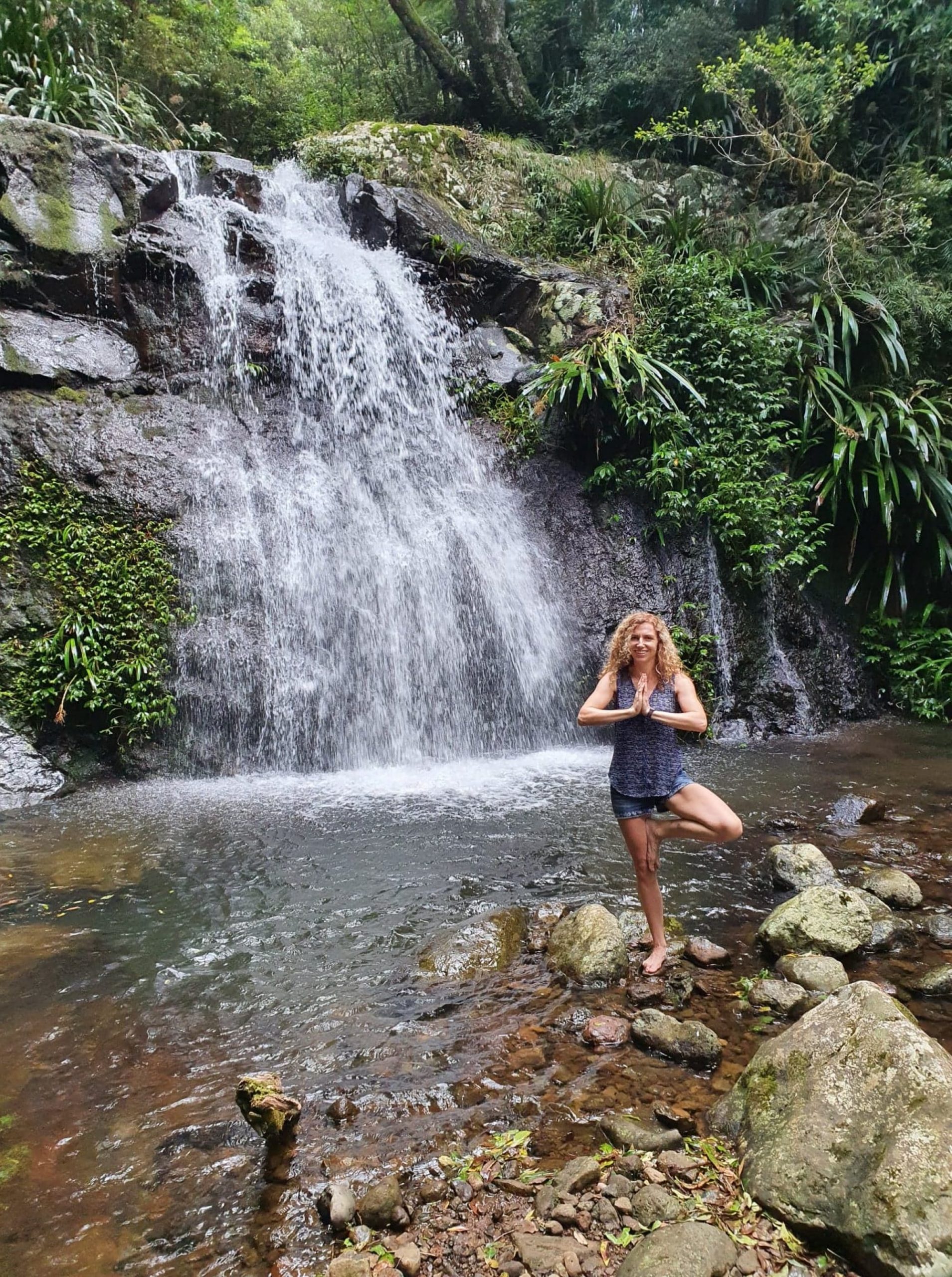There are many different styles of yoga, with new varieties evolving all the time. The following is a brief outline of the main styles practised here in the west.
Hatha Yoga
Great for beginners, the Hatha style of yoga is a type of yoga that emphasizes the physical practice of yoga postures (asanas) and breathing techniques (pranayama). The word “Hatha” is a combination of two words: “ha” meaning “sun” and “tha” meaning “moon”. The name Hatha yoga refers to the balance and union of opposing forces in the body and mind, such as hot and cold, or light and dark – Yin and Yang.
People often consider Hatha yoga a “gentler” form of yoga compared to more vigorous styles such as Vinyasa or Ashtanga yoga. Hatha yoga teachers typically teach slower-paced classes with a focus on proper alignment, stability, and balance in the poses.Hatha yoga is also great for stress relief and relaxation.
People of all ages and fitness levels can practice Hatha yoga, and teachers can modify it to suit the needs of different students.
Hatha yoga classes often include a combination of standing poses, seated poses, and twists, as well as inversions, and pranayama.
The practice of Hatha yoga can help to improve flexibility, strength, balance, and overall physical fitness. It also has many mental and emotional benefits, such as reducing stress and anxiety, improving mood, and promoting a sense of calm and inner peace.
Vinyasa/Flow Yoga

Vinyasa style of yoga often referred to as flow or power yoga is more athletic and can be more playful than Hatha. In vinyasa, a smooth transition from one pose to the next aligns with the flow of the breath. Practitioners can get lost in their practice by synchronizing breath and movement, which also increases blood circulation and improves body alignment. You’re sure to feel happier, freer, and have a sense of more space in your body following a vinyasa flow class.
Upcoming class: Thursday’s 6.30 pm – 7.30 pm
Ashtanga Yoga
Ashtanga style of yoga, more hardcore than Hatha and Vinyasa requires some serious strength, flexibility, and endurance. An Ashtanga practice usually starts out with five repetitions of sun salutation A and five sun salutation B yoga sequences. Postures are standing, seated, and as you improve progressively more advanced poses.
The practice of Ashtanga yoga is often synchronized with the breath. That is, each movement is linked to an inhale or an exhale. The practice is typically fast-paced, with a focus on building strength, flexibility, and endurance.
Ashtanga yoga is suitable for people with some prior experience with yoga. It is not recommended for beginners or those with injuries or health conditions that may be exacerbated by the fast pace and intensity of the practice.
Ashtanga yoga can help to improve physical fitness, flexibility, balance, and overall well-being. Further, it can help promote a sense of focus, discipline and self-awareness.
Yin Yoga
Slow, gentle and relaxing, Yin style yoga is a wonderful complement to Yang styles of yoga. That is, the Vinyasa/flow style of yoga just described. Vinyasa/flow yoga works the muscles of the body, while Yin targets the connective tissues (fascia, tendons, ligaments, joints..). While practising both Yin and Yang styles provides a perfect balance, Yin is wonderful to practice in its own right.
Yin yoga is much slower and quieter than flow styles. Practitioners hold Yin poses, typically for 3 to 5 minutes. Yin yoga, which originated from traditional Chinese medicine, seeks to harmonize and balance the organs. It does so by targeting the organ meridians that run throughout the body through a specific set of yoga poses. Yin organs include the liver, bladder, gallbladder, small intestines, stomach, and large intestines.
Upcoming Class: Tuesday’s 8.15 pm – 9.15 pm (Beginner level)
If you’d like to know what to expect in a Yin Yoga class. Click here to read our recent post about our Tuesday class: Yin Yoga class for beginners.

Restorative Yoga
In restorative yoga, practitioners hold poses for extended periods of time, usually up to 20 minutes. Classes typically include a small number of poses, usually between 5 and 6. To assist in holding the poses, practitioners often use props such as blankets, bolsters, zafus, blocks or straps. People use restorative yoga to improve the quality of life for those suffering from injuries, stress, or illnesses.


